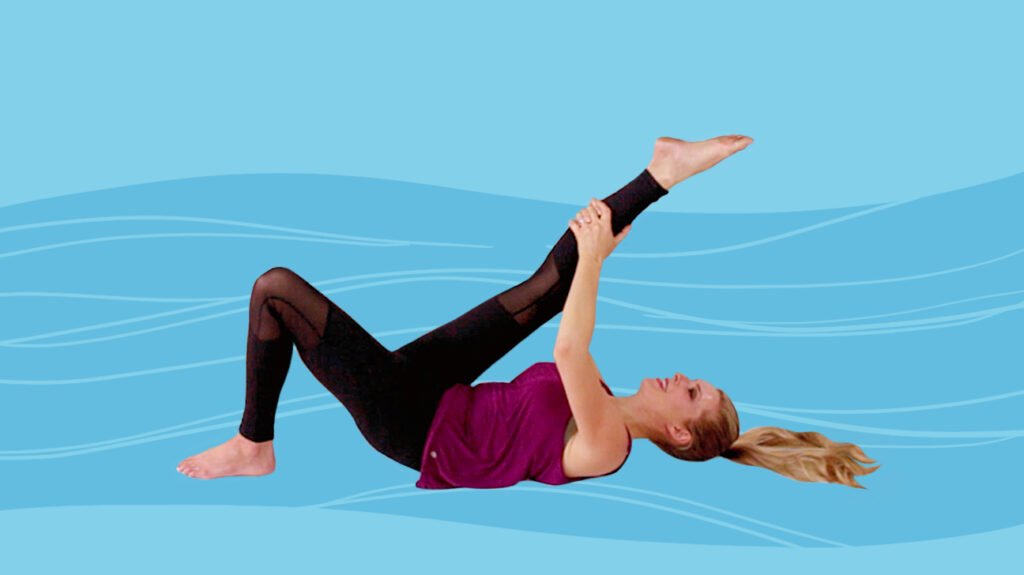15 remedies to treat arthritis pain

The aches and pains often come with aging, or at least we assume this to be true. Many adults develop inflammatory conditions and are resigned to dealing with arthritis pain. Most people take over-the-counter medications such as ibuprofen to counteract the painful condition. However, others are committed to finding natural remedies to combat the painful agony of arthritis.

To treat arthritis, one must precisely understand what the condition is. Arthritis is a degenerative condition that can occur as a result of aging, but it can also be the result of a genetic predisposition. Additionally, there are multiple forms of arthritis, such as osteoarthritis and rheumatoid arthritis.
Osteoarthritis arises from the general wear and tear of the joints as we age. Some osteoarthritis occurs due to injuries during a person’s life. Rheumatoid arthritis is an autoimmune disorder in which the immune system mistakenly sees the joints (and joint tissue) as “the enemy” and attacks what it believes to be foreign tissue.
With any of these situations, the pain and discomfort associated with arthritis arise from inflammation of the joint tissues. Knowing that inflammation is a major factor in the development of arthritis pain helps you focus on how to treat the condition.
Doctors generally advise taking the over-the-counter medications, as mentioned above. And, in some severe cases, they may prescribe a mild pain reliever.
However, recent evidence shows that many of those with arthritis often become addicted to these pain relievers. With national trends influencing physicians to avoid prescribing opioids or other pain medications due to the potential for addiction, many patients find themselves seeking natural ways to relieve throbbing arthritic pain.
Table of Contents
15 natural remedies to relieve arthritis pain.
1. Exercise.
Do you think arthritis should be treated by relaxing and reducing the use of painful joints? Actually, the opposite is true. Regular workouts help the joints to remain flexible.
Consider how you might feel first thing in the morning: After all those hours of inactivity, you are probably a little stiff. However, once you move around a bit, it becomes easier for you to move.
The same premise occurs when you walk or do light exercise. Speaking of walking, walking at a moderate pace, even just for twenty minutes a day, can help keep your joints flexible. Swimming, perhaps one of the best exercises for people with arthritis, allows you to move a lot with little impact on your limbs.
Exercising lightly can also help strengthen your muscles.
2. Hot and cold therapy.
While many people living with arthritis don’t enjoy cold weather, as it tends to increase joint pain and stiffness from the condition, cold therapy actually helps reduce swelling associated with inflammation.
For quick pain relief, you can take a bag of frozen vegetables, wrap it in a towel, and place it on the affected area. However, an excellent investment is a reusable gel filled ice pack.
Elevate the affected area and place the ice pack on it. Fifteen-minute to half-hour ice therapy will help reduce the painful swelling that makes the joints so stiff.
Heat therapy is also great for relieving arthritic pain, however, keep in mind that heat therapy takes longer to administer (and takes longer to relieve pain).
If mornings are difficult for you and time permits, warm baths will help loosen stiff joints that have been sedentary for some time. To provide additional relief, sprinkle Epsom salt in the warm bath water.
Other forms of heat therapy include the use of heating pads in conjunction with the aforementioned elevation of the affected limbs. You can also see some relief if you sleep under an electric blanket.
You can also find significant relief by alternating hot and cold therapy.
3. Acupuncture.
The acupuncture is fast becoming a popular natural method to treat various physical ailments, including arthritis. This method of treatment comes from the Orient and involves the insertion of thin needles at specific pressure points in the body.
This practice comes from believing that placing needles in certain areas will alleviate any pain or other physical discomfort. Enthusiasts believe that placing needles at specific points on the body redirects negative energy that could be causing arthritic pain.
Western medicine is beginning to understand the value of acupuncture. However, if one decides to explore this form of treatment, look for a licensed and certified acupuncturist.
4. Cupping or cupping therapy.
Do you like the concept of acupuncture? But maybe the thought of getting punctured scares you? So, you can try cupping therapy.
This alternative medicine works on the same principle, determining precise pressure points and redirecting the body’s energy. However, instead of needles, the technician applies pressure by sucking tissue into crystal glasses, using gentle vacuum pressure.
5. Meditation techniques and other relaxations.
The National Institute of Health conducted a study in which participants were encouraged to use meditation or other techniques to reduce arthritis pain.
Many people found that the practice not only minimized pain, it helped them better cope with any pain that was present. In fact, stress reduction had an overall positive effect for participants, with most reporting that they had a reduction in symptoms due to decreased stress.
This result was especially true for those who experienced depression, along with arthritis.
Many people take advantage of the apps that provide the steps to meditate or experience relaxation techniques.
6. Add fat to your diet.
Yes, you read that correctly: add some fats to your diet. However, the fats we are talking about are not unhealthy saturated fats that can lead to weight gain and inflammation in the body. These facts are omega-3 fatty acids that you can add to your diet by eating more fish or taking supplements.
Fish oil supplements, rich in these omega-3 fatty acids, have been shown in multiple studies to relieve pain and inflammation associated with arthritis.
Another fatty acid shown to help reduce arthritis pain and stiffness is gamma-linolenic acid, or GLA. You will find GLA in individual plant seeds, such as hemp, evening primrose, black currant, or evening primrose. While you cannot ingest these plant seeds, you can purchase the oils from these seeds or find supplements that contain the oils.
7. Try massage.
As stated above, many people find relief from painful physical conditions by finding ways to relax.
A massage is a great way not only to relax but also to soothe sensitive and inflamed muscles. A certified massage therapist can focus on problem areas.
Regular massage therapy sessions have been shown to improve the overall range of motion in affected individuals.
8. Herbal supplements that reduce arthritic pain.
Many supplements on the market boast that they can relieve inflammation associated with arthritis:
- Boswell.
- Bromelain.
- Cat’s claw.
- Gingko Biloba.
- Nettle.
- Rosehip.
Always consult your doctor before trying any new supplement.
9. Curcumin.
Curcumin is the extract with medicinal characteristics of an Indian spice called turmeric, which is used in cooking and that you can add to your food, however, it is in curcumin the power to reduce the pain of inflamed joints.
10. Find a creative outlet.
Do you like painting or gardening? Maybe you like to write. Stress is directly linked to inflammation and arthritis pain. Whether you have financial or personal concerns that stress you out, finding a creative outlet is an excellent natural remedy for arthritic pain relief.
11. Laugh big.
An adage says that laughter is the best medicine, and studies show this to be true. Laughter helps relieve stress that is linked to painful arthritis. Also, spending time with people who make you laugh will help you get rid of that stress.
Alternatively, watch a funny movie (bonus points if you do this while elevating the arthritic limb and alternating those hot and cold compresses). Hot / cold therapy will not only help as a natural remedy, but it will also distract you from whatever stressful situations you are experiencing.
12. TENS Transcutaneous Electrical Nerve Stimulation.
This natural remedy for arthritis pain is becoming quite popular, especially for those who experience arthritis pain in the back or shoulders.
ENET uses sticky pads equipped with electrodes that deliver small shocks of electricity to the affected area. You can adjust the frequency and strength of the blows with a marker.
Electric shocks from TENS pads tend to nullify nerve pain associated with arthritis. Additionally, the pads trigger endorphins, which further dissipate arthritis pain.
13. Vitamin D supplements.
You know that vitamin D is essential for our overall well-being, but did you know that vitamin D deficiencies have been directly linked to arthritis pain caused by the immune system? A 2016 study found that many people with rheumatoid arthritis had lower than normal vitamin D levels. Spend some time in the sun or take a vitamin D supplement to experience these natural remedies for arthritis pain.
14. Chondroitin and Glucosamine.
Another important supplement for arthritis pain is the combination of chondroitin and glucosamine. Glucosamine directly affects the growth and maintenance of cartilage. Chondroitin is a natural remedy that prevents the breakdown of cartilage. Together, these supplements help relieve arthritis pain.
15. Yoga and Tai Chi.
Low-impact exercise (think yoga, stretching, or Tai Chi) can help relieve stress and strengthen the muscles around affected arthritic joints.
Additionally, gentle exercise will help you learn to breathe properly, delivering vital oxygen to the body, and that can reduce pain. Participating in these activities as little as three times a week can help ease the pain associated with arthritis.
Final thoughts.
If you hesitate to take prescription or over-the-counter medications to solve your arthritis pain, try these therapies. You might be surprised how helpful these natural remedies can be in helping you feel good again.


